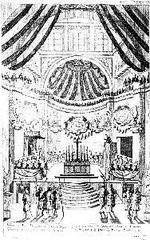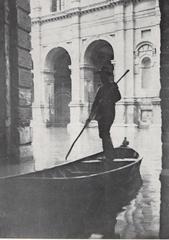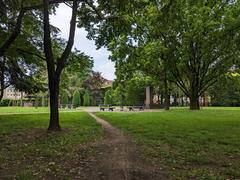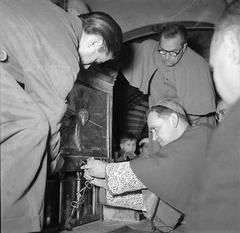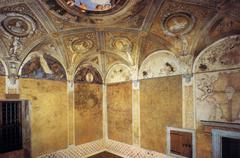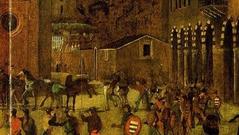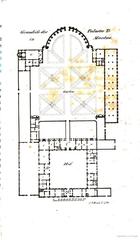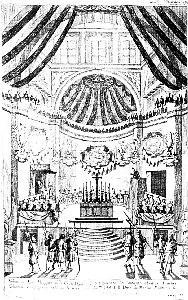
Basilica Palatina di Santa Barbara, Mantua: Visiting Hours, Tickets, and Historical Guide
Date: 15/06/2025
Introduction
The Basilica Palatina di Santa Barbara, located in the heart of Mantua, Italy, stands as a beacon of Renaissance artistry, religious devotion, and musical innovation. Commissioned by Duke Guglielmo Gonzaga in the mid-16th century and designed by Giovan Battista Bertani, the basilica served as the private chapel of the Gonzaga dynasty, symbolizing their political power and refined cultural aspirations. Its palatine status—granting autonomy from episcopal oversight—distinguishes it among northern Italy’s religious sites. Today, visitors encounter a remarkable integration of architectural grandeur, artistic masterpieces, and an enduring musical heritage, epitomized by the historic Antegnati organ, a rare Renaissance instrument still in use (Diocesi di Mantova; Wikipedia; Cuorilievi; Festivaletteratura).
Situated within Mantua’s Palazzo Ducale complex, the basilica immerses visitors in the Renaissance era’s artistic, liturgical, and political dimensions. Its late Renaissance and Mannerist architecture features a single nave, domes, frescoes, and intricate stuccoes by artists such as Lorenzo Costa the Younger and Domenico Brusasorci. Acclaimed for its acoustics and musical tradition, Santa Barbara was a hub for sacred music under Gonzaga patronage and attracted leading composers of the day. The basilica continues to host concerts, liturgies, and guided tours, celebrating its rich cultural legacy.
This guide offers comprehensive information on visiting hours, tickets, accessibility, travel tips, and nearby attractions, ensuring a rewarding visit to one of Mantua’s most treasured historical sites. Whether drawn by history, art, music, or spirituality, a visit to the Basilica Palatina di Santa Barbara promises an enriching cultural journey (Mantua Tourism; Antegnati Santa Barbara).
Table of Contents
- Introduction
- Historical Context and Palatine Status
- Architecture and Artistic Heritage
- Musical Tradition and the Antegnati Organ
- Political and Religious Significance
- Visiting Hours and Ticket Information
- Accessibility and Travel Tips
- Nearby Attractions
- Visitor Experience and FAQ
- Plan Your Visit
- References
1. Historical Context and Palatine Status
Origins and Development
Commissioned by Duke Guglielmo Gonzaga between 1562 and 1572 (Diocesi di Mantova), the basilica reflects the era’s flourishing arts and humanist ideals. Architect Giovan Battista Bertani ensured its design reflected both spiritual aspirations and the Gonzagas’ political stature (Wikipedia). Located within the Palazzo Ducale, it functioned as the court chapel and a visible symbol of dynastic power.
Palatine Distinction
“Palatina” designates a church serving as a sovereign’s private chapel, exempt from diocesan authority (Cuorilievi). Duke Guglielmo secured privileges granting the basilica liturgical autonomy, including a unique rite distinct from the Roman standard (Wikipedia). This independence reinforced the ducal court’s ceremonial life, with the basilica hosting court rituals, religious festivals, and musical performances. Its original direct passage to the palace emphasized its status as an extension of the Gonzaga court.
2. Architecture and Artistic Heritage
Renaissance Design
The basilica exemplifies late Renaissance and Mannerist architecture. The plan features a single, wide nave with side chapels, a raised presbytery beneath a dome, and a semicircular apse with intersecting coffers. The exterior’s brick façade and distinctive bell tower—topped with a round temple inspired by Bramante—define the Mantua skyline (commons.wikimedia.org).
Interior Decoration
Inside, the basilica dazzles with stuccoes, frescoes, and paintings. The grand altarpiece “Il Martirio di S. Barbara” by Domenico Brusasorci, side chapels with works by Lorenzo Costa the Younger, and organ doors painted by Fermo Ghisoni are highlights (Diocesi di Mantova). Light from the dome accentuates the altar, and the chapels hold further artistic treasures tied to the Gonzaga legacy (antegnatisantabarbara.it).
3. Musical Tradition and the Antegnati Organ
Renaissance Musical Innovation
Duke Guglielmo made Santa Barbara a “chiesa che suona”—a church resounding with music (Diocesi di Mantova). He established a prestigious musical chapel and commissioned organ builder Graziadio Antegnati to create an innovative instrument in 1565 (Wikipedia; Cuorilievi). The organ, with 312 original pipes, supports a wide range of Renaissance and Baroque repertoire.
The basilica attracted leading composers—such as Giaches de Wert and Giovanni Giacomo Gastoldi—making it a center of sacred music. Its musical archive, with hundreds of manuscripts, is a valuable scholarly resource (antegnatisantabarbara.it).
Modern Use
The restored Antegnati organ is central to the basilica’s contemporary music program, hosting concerts and liturgical events. The Cappella Musicale di Santa Barbara continues to perform historic works, and the basilica regularly features in Mantua’s major festivals (Festivaletteratura).
4. Political and Religious Significance
The basilica’s palatine status was a deliberate assertion of Gonzaga power, with its autonomy reflecting their semi-sovereign standing within the Holy Roman Empire (Diocesi di Mantova). After Italian unification and the end of the Papal States, the church maintained its privileges and continued as a major Catholic site. Since 2018, the historic passage to the palace is again open to visitors (Wikipedia).
5. Visiting Hours and Ticket Information
- Hours: Typically Tuesday to Sunday, 9:00 or 10:00 AM to 5:00 or 6:00 PM. Closed Mondays and major holidays. Hours may vary due to services or events (Cuorilievi; Wikipedia).
- Tickets: Standard admission is usually €7–€8 (discounts for students, seniors, and youth; children under 18 often free). Guided tours may incur additional fees.
- Advance Booking: Highly recommended, especially during festivals or peak seasons.
- Admission: Occasionally free; donations encouraged for preservation (Guidaturistica Mantova Verona).
Check the official website and Mantua Tourism for current details.
6. Accessibility and Travel Tips
- Accessibility: The basilica is generally wheelchair accessible, with ramps at entrances and accessible restrooms. Some historic areas may be challenging—contact in advance for assistance.
- Dress Code: Modest attire is required; shoulders and knees should be covered.
- Photography: Permitted without flash, except during services or concerts.
- Getting There: Centrally located at Piazza Santa Barbara, 4; easily reached on foot from Mantua’s city center. Parking and public transport are available nearby.
Best times to visit are spring and early autumn for pleasant weather and fewer crowds. Guided tours are recommended to fully appreciate the site’s artistic and historical richness.
7. Nearby Attractions
Combine your visit to Santa Barbara with other Mantua highlights:
- Palazzo Ducale: Mantua’s grand ducal palace
- Castello di San Giorgio: Famous for the Camera degli Sposi
- Palazzo Te: Masterpiece of Mannerist architecture
- Piazza delle Erbe: Lively medieval square
All are within easy walking distance in Mantua’s historic center (Trek Zone; Finestre sull’Arte).
8. Visitor Experience and FAQ
Guided Tours and Concerts
Guided tours run regularly and often include demonstrations of the Antegnati organ. The basilica also hosts concerts—especially during festivals like Festivaletteratura—and special liturgies such as the feast of St. Barbara on December 4.
Practical Information
Q: What are the visiting hours?
A: Generally 9:00 or 10:00 AM to 5:00 or 6:00 PM, Tuesday to Sunday (verify before your visit).
Q: How do I purchase tickets?
A: Online via the official website or at the entrance.
Q: Are there discounts?
A: Yes, for students, youth, and seniors; children under 18 are often free.
Q: Is the basilica accessible?
A: Yes, with some limitations in historic areas.
Q: Are guided tours available?
A: Yes, for a modest additional fee.
Q: Can I attend concerts?
A: Yes, check the concert calendar; some events require separate tickets.
Q: Is photography allowed?
A: Non-flash photography is permitted except during services or concerts.
9. Plan Your Visit
- Check official websites for the latest information on hours, tickets, and events: Basilica Palatina di Santa Barbara, Mantua Tourism.
- Download the Audiala app for guided audio tours and updates.
- Combine your visit with Mantua’s other historical gems for a full Renaissance experience.
10. References
- Diocesi di Mantova
- Wikipedia
- Cuorilievi
- Festivaletteratura
- Mantua Tourism
- Antegnati Santa Barbara
- Guidaturistica Mantova Verona
- Trek Zone
- Finestre sull’Arte
- commons.wikimedia.org
- shegoesthedistance.com
Plan your visit to the Basilica Palatina di Santa Barbara and discover the intersection of art, music, and history that defines Mantua’s Renaissance legacy.
